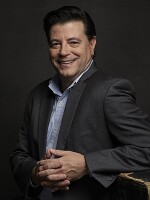On the grounds of Wethersfield's Webb-Deane-Stevens Museum, archaeologists have discovered evidence of the oldest English colony in Connecticut.
In 2016, the Webb-Deane-Stevens Museum decided to add a new education and visitor center on the premises. To ensure the addition would not disturb any historically significant artifacts on the site, they hired the Public Archaeology Survey Team to conduct an archeological survey.
Ground-penetrating radar revealed three potential sites. Two were trash pits – one from the 19th century, the other from the early 20th century. Those sites yielded plenty of artifacts.
On the day I visited the museum, I met Charbra Jestin. She is the president of the Connecticut chapter of the National Society of Colonial Dames of America, which owns and operates the Webb-Deane-Stevens Museum. But on this particular day she is a volunteer archaeologist, trowel in hand, standing in the dug pit from the early 20th century.
“I’m digging up lots of shells - lots and lots of oyster shells and clam shells,” said Jestin, “a lot of broken glass, mineral oil bottles, and ceramic shards.”

Jestin was digging up some pretty cool stuff, including a bottle that was inexplicably tapered at the bottom, but the real find is at a site about 100 feet away.
“This is the earliest archaeological evidence of English settlement in Connecticut,” said Sarah Sportman, PAST’s senior archaeologist. “So Wethersfield is Connecticut's first town, and right now this is the earliest site that we have.”
The site is believed to be from the 1630s, the time of Wethersfield’s original settlement.
“We know that we are on a domestic site because there are a lot of household materials,” said Sportman. “So we have diamond window panes, and the lead that will go around them. We have furniture tacks, all kinds of clothing-related artifacts. We also found a large assemblage of 17th century coinage which is very rare.”

The site also gave historians a glimpse into the growing tensions between settlers and Native Americans, tensions that would culminate in the Pequot War.
“The thing that was a surprise to all of us is that they came across the evidence of an early palisade, or a wall that would have been part of a fortification,” said Charles Lyle, Executive Director of the Webb-Deane Stevens Museum, “the wall surrounded the settlement to protect it from the Native Americans who wanted them to leave.”

Still, PAST’s Sarah Sportman said amid the strain there is evidence from the Wethersfield dig that the two sides still found ways to interact.
“We found wampum beads,” said Sportman, “they were made out of shell, they are Native American beads that the English and Dutch quickly started to use as currency. We also found these trade beads.”
With the archaeological survey complete, construction will begin in the near future on the new addition to the museum. Sarah Sportman says PAST is in the process of securing funding to learn more about the fortified wall and the surrounding settlement.






